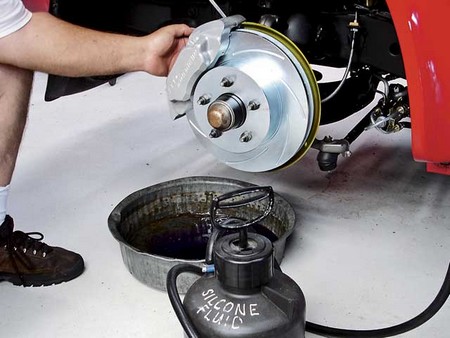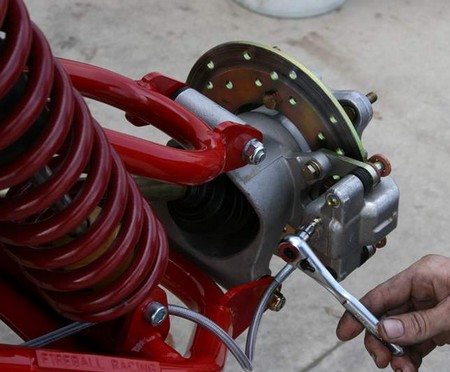The brake fluids in the brakes of any vehicle must be changed every two or three years. Particles of air can significantly reduce the efficiency of these brakes. The fresh reload of brake fluids is called brake bleeding and this procedure is a customary option when a vehicle is sent to the mechanic for a routine service. Savvy car-owners can save almost $144 in brake bleeding fees if you are capable of bleeding the brakes on your own.

Here are some hands-on tips on how to bleed brakes for your car.
- You will need a clear plastic hose and a clear plastic container, a brake bleeding wrench or a couple of small 6.5 inches wrenches, some spray penetrating oil, a pair of safety glasses and towels, brake fluids up to two quarts if you are going to bleed the entire system. In some cases a hammer and small propane torch is required.
- Check the oil reservoir whether it is full. It must be full in order to start bleeding the brakes. Remove the cover on the master cylinder cap.
- Fill each side of the cylinder with brake fluid about ¼ of an inch from the top of the reservoir.
- Set the cover back on top of the master cylinder but don’t tighten it because you will be removing it periodically to add more fluid.
- Spray down bleeder screws with penetrating oil. This may help loosen stuck or corroded bleeders.
- Use a six point wrench or a socket and loosen each bleeder screw. Make sure you use the correct six point wrench or socket to prevent rounding off the bleeder screw. If the bleeder screw refuses to become loose, you can heat the screw with a small propane torch. Then gently tap the sides of the screw with a small hammer, while turning the bleeder screw with a wrench until it becomes loose.
- Ask a friend to press the brake pedals four times and hold it in a suppressed position.
- Attach the clear hose to the bleeder screw of the wheel furthest away from the master cylinder.
- Dip the other end of the hose into the clear container. Then, open the bleeder screw.
- The brake pedal inside of the car should go slowly to the floor. When the pedal reaches the floor, close the pedal screw. Allow the brake pedal to return slowly to its initial position.
- Remember to never allow the pedal to reach its released position when the bleeder screw is open as this would draw air back into the system.
- Again apply pressure to the brake pedal and open the bleeder screw. Note the fluid coming through the hose. Once again, when the brake reaches the floor, tighten the bleeder screw.
- Repeat this procedure in order to prevent any air bubbles that may enter the hose.
- Open the cap of the master cylinder and fill in brake fluid when necessary
- Make sure you are frequently checking the fluid level at the master cylinder during bleeding.
- When all the air bubbles are removed and the brake pedal is firm, tighten the cover on the master cylinder.
- Make sure to dispose the old brake fluid properly.
- Reminder, make sure the master cylinder is full of brake fluid and is checked regularly during the brake bleeding process
After a couple of times of the brake bleeding sessions, you can easily know how to bleed brakes on your own.









